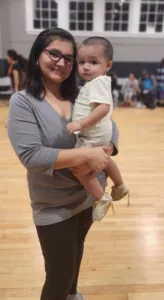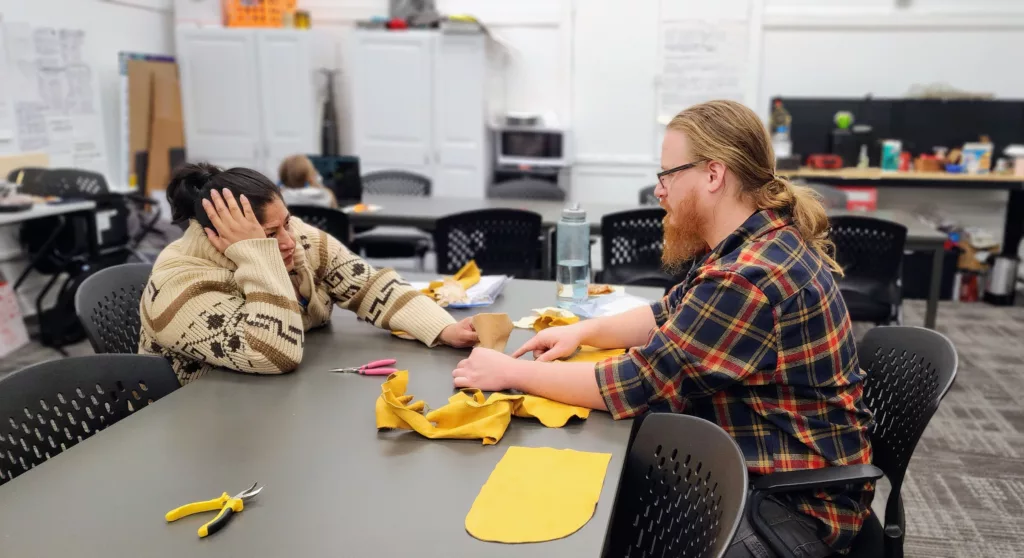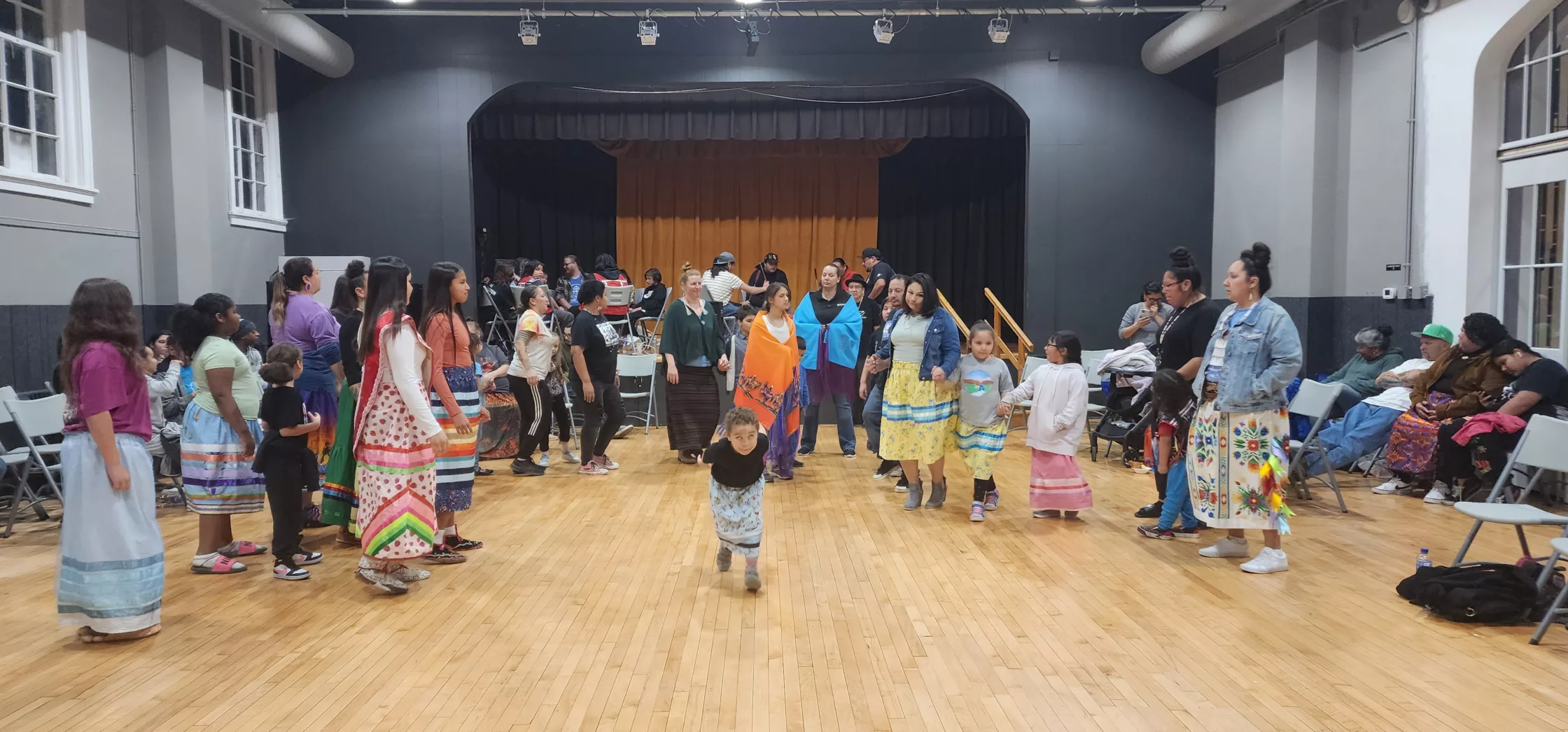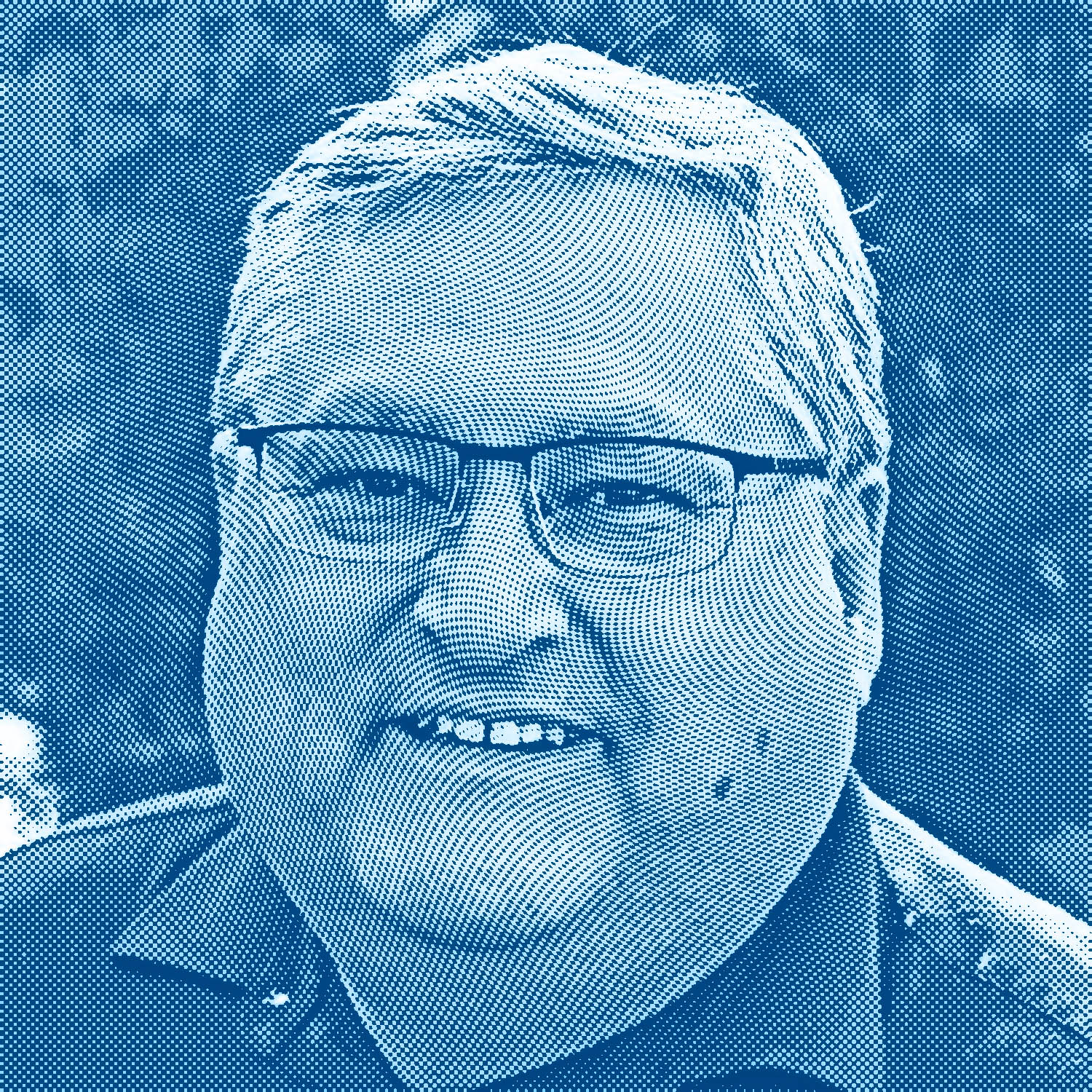Max Contreras is like any other toddler learning to walk, taking a few falls and bumps as he navigates putting one foot in front of the other. But Max didn’t like any of the shoes his mom, Brenda Salcedo, put on the little tyke’s feet. (Correction: This article incorrectly stated Max’s last name. It has been corrected.)
Desperate and seemingly out of options, she tried a last-ditch move: a pair of hand-made moccasins. To her surprise, Max embraced his new footwear – and she reconnected with an identity she had unintentionally left behind.
“We tried walking toys. We tried little slippers for him. And he just didn’t want to do it,” said Salcedo, who is of Omaha tribal heritage. “I thought, ‘This better work this time.’ It did. He actually broke them in … that night.”
Salcedo made the moccasins as part of a three-week class hosted by the Omaha-based nonprofit Bluebird Cultural Initiative.
The class, along with others at Bluebird, is an attempt at building community among urban Indigenous people. Its leaders want to heal generational trauma. And they want to revive fading Native traditions.
“We’ve lost that understanding of how to create those simple things that keep us connected,” said Nicole Benegas, Bluebird’s executive director. “We’re revitalizing those practices, creating a sense of community.”
Community is central to Bluebird’s mission. Founder Steve Tamayo, an artist and activist and Benegas’ father, created the nonprofit with the goal of rekindling tribal connections in Omaha, a majority white metro area nearly 90 miles from the nearest reservation.
The idea for the moccasin class, Benegas said, came from Society of Care, a Nebraska organization dedicated to helping Native American children and families cope with trauma.
With Benegas and Tamayo leading the way, about 40 students received a moccasin history lesson that touched on the differences between Plains moccasins and other regions as well as men’s and women’s styles. Then they learned how to draw patterns, cut and sew. Bluebird provided the materials, which varied to accommodate tribal beliefs – some students used deer hide while others used cowhide.

They then put the finished work to the test at Bluebird’s “Rock Your Mocs” round dance earlier this month.
Jen Cruell, a Sicangu Lakota citizen, was among those rocking newly crafted moccasins. The class, she said, represented her first step toward reestablishing Indigenous connections.
“My grandfather was a medicine man,” she said. “He spoke Lakota. He knew how to do beadwork, and he could make regalia. And he made me moccasins.”
Cruell danced from about the time she was 9 months old to 16 years, she said. Typical teenage interests took her away from powwows, referred to as Wacipi by the Lakota, Dakota and Nakota.
The moccasin making reconnected her with her ancestors, Cruell said. It also rekindled her interest in dancing. She plans to soon take a class on how to make a ribbon skirt.
“When I danced, I did traditional and fancy dancing,” she said. “At my age, I don’t think I have the energy to be a fancy dancer again.”
At “Rock Your Mocs,” a few dozen dancers, family and friends joined class participants as they danced in a circle to traditional music.
Little Max Contreras even had his own introduction to traditional dance, though a few falls accompanied the lesson.

Making moccasins has helped Brenda Salcedo, Max’s mom, realize the importance of exposing her young children to Omaha culture and tradition.
Salcedo grew up attending powwows and ceremonies while living in the Walthill area of Thurston County. She lost that connection when her family moved to Omaha when she was still a child.
The class reenergized her desire to rebuild that connection. And it opened her eyes to a community she didn’t realize existed.
“I think one of the biggest things is the time and connection between people…You see young people helping each other, asking each other questions about technique on how to make their moccasins tighter,” she said. “Somehow it becomes a family affair. We have some who bring their children to class. Grandmas, with their daughters and grandchildren.”
Classes can also help build a path to overcoming generations of trauma, Benegas said.
Bluebird partnered the moccasin class with a piece on sobriety and substance abuse prevention. Substance abuse is one barrier blocking Indigenous people from connecting with their culture, from “being in our circle,” Benegas said.
“There are a lot more people coming here and wanting to come back to the circle,” she said. “It’s been therapeutic for people coming out of substance abuse and addiction. Not just for them, but their family members. We’ve had participants talk about raising their grandchildren because the parents are absent.”
Bluebird Cultural Initiative grew from Tamayo’s activism with the Standing Rock protest of the Dakota Access pipeline in 2016 and 2017, according to Benegas. Tamayo, a Sicangu Lakota, taught traditional art to children while the adults protested.
Afterward, Tamayo decided to use his four decades of knowledge in traditional teachings and practices to launch Bluebird Cultural Initiative, Benegas said. He named it in honor of a grandfather whose last name was Bluebird.
Benegas joined her father’s efforts in 2021. It now boasts a staff of four full-time employees and is based at Yates Illuminates, the former Omaha elementary school that’s been transformed into a community and cultural resource hub. About 20 people volunteer on a regular basis, Benegas said.
Bluebird also does community outreach, working with professional organizations, schools and colleges on subjects such as relationships and Two Spirit (the Native term for LGBTQ) understanding and support, Benegas said.
Classes are not limited to Indigenous people.
Andrew Hillmer, an area public school teacher who isn’t Native American, said he routinely attends programs at Bluebird Cultural Initiative, including a drum group. He participated in the recent moccasin class.

“I want to know people as contemporary people, not as stories that we were told,” Hillmer said. “I want to build personal relationships so I can better advocate for students, and be informed.”
Little Max has nearly worn out his moccasins, Salcedo said. The mother of six plans a return visit to Bluebird to pick up material for moccasins for herself and two young daughters. It’s another step linking her children to their Omaha tribal roots, and some added comfort for their feet.
For Benegas, seeing people like Salcedo and Cruell reconnect with their heritage shows that Bluebird has a role in the Omaha community.
“We are here … to revitalize cultural traditions and practices in educating people,” she said, “so that we can energize our youth and young people to move forward.”
The Flatwater Free Press is Nebraska’s first independent, nonprofit newsroom focused on investigations and feature stories that matter.



3 Comments
thank you Tom Trudell for a positive story, and I appreciate fine writing/storytelling style. Bring me more.
Wonderful article. Wish I lived closer to Omaha so I could take a class. So glad that they are regenerating their culture.
Not sure how making moccasins connects anyone to their past…any more than making a buggy connects us to our pre-automobile past or making and wearing a tunic connects us to our Greek roots.
What connect us–ALL OF US– to our past are PEOPLE, not things.
This is about nostalgia–which is fine, but let’s stop attaching some mystical effect to making things that are widely considered obsolete.